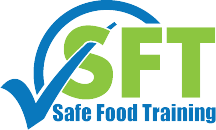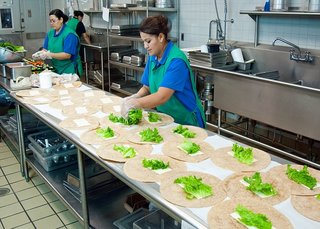Understanding Bare Hand Contact Rules as a MN Certified Food Manager
Some rules within the current food code are clear on what is acceptable and what is not, but there are certain regulations where there are nuances that may not be clearly defined. One such rule that a MN Certified Food Manager must be prepared to enforce is the no bare hand contact rule.
This rule came to the forefront of food safety news earlier this year when California restaurateurs fought to repeal the ban on bare hand contact with ready to eat foods. It is important to understand how to properly comply with this rule in our state.
Bare Hand Contact Alternatives
There are several alternatives to handling ready to eat food with bare hands.
- Gloves
- Tongs
- Deli tissue
- Spoons and other utensils
The most common of these options is to require food handlers to use gloves. The current most commonly used types of gloves are made from either latex or vinyl. Due to potential allergies, 5 states have passed legislation to ban the use of latex products in food service and other industries. Expect this trend to continue as other states are sure to follow suit. At the present time your local health inspector is not required to suggest a switch from latex to vinyl, but they may do so on their next visit.
While gloves are preferred, deli tissue may be used at service counters or where constant glove changing would be necessary. Utensils are recommended for hot foods.
In recent discussions with health department officials, they have mentioned a trend in poor hand washing procedures now that gloves are required to be worn in many cases. A MN Certified Food Manager needs to provide their employees with proper education concerning no bare hand contact and hand washing. Here are a few points that should be monitored.
- Soap must be used during hand washing
- Hand washing should take at least 20 seconds
- Gloves cannot simply be changed after handling food, hands must be washed between glove changes
These are three simple things that may be overlooked as glove use increases. Along with the current trend to ban latex, another potential increase in bare hand contact regulations may be to require that gloves be worn at all times whether with ready to eat foods, raw foods or utensils that may come in contact with food products.



